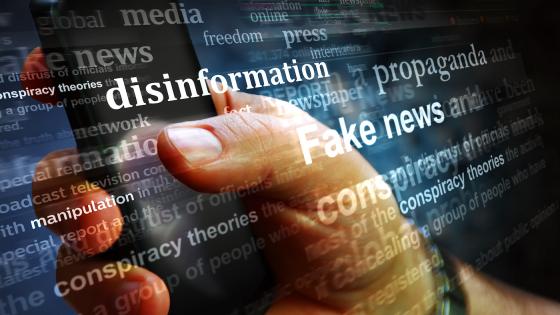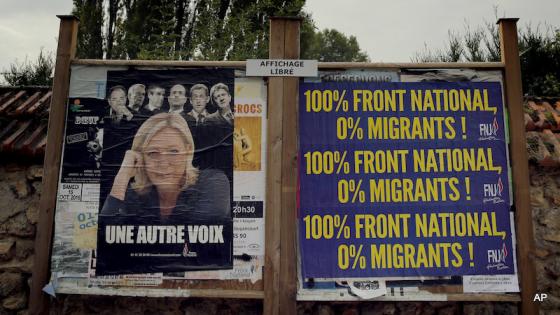In an address at the World Economic Forum in January 2024, Ursula von der Leyen, President of the European Commission, highlighted that “[f]or the global business community, the top concern for the next two years is not conflict or climate. It is disinformation and misinformation, closely followed by polarisation within our societies”. In the wake of von der Leyen’s stark warning and the 2024 World Economic Forum’s ranking of fake news as the most severe global short-term risk, the imperative to address misinformation has reached a critical juncture. Yet, amidst a recent surge of research across disciplines (e.g. Assenza et al. 2024a, Campante et al. 2023, Fraccaroli et al. 2019) and intense policy debates, a key question remains: How can we empower citizens to effectively navigate the treacherous waters of misinformation?
Our research (Assenza et al. 2024b) addresses this question by exploring the complex nexus between awareness of personal susceptibility to fake news, beliefs, and behaviour. Through a rigorous experiment conducted with a representative sample of the US population, we uncovered compelling insights into the efficacy of demand-side policy interventions.
We designed a survey for a randomised control trial information provision experiment to exogenously shift individuals’ beliefs about their perceived susceptibility to fake news. Crucially, we test whether reducing individuals’ misapprehension of their susceptibility significantly affects their willingness to act against the risk of being harmed by misinformation. The experiment advances the literature using information-provision experiments, as we investigate the effect of (changes in) beliefs on behaviour. The effect of the information treatment on beliefs serves as a manipulation check: we use an information treatment to exogenously change beliefs and gauge the causal effect of beliefs on behaviour. The manipulation check (of changes in beliefs) documents whether the exogenous shift was successfully induced.
To raise participants’ awareness of their susceptibility to fake news, participants perform an incentivised news-accuracy detection task in which they must distinguish between accurate and fake news. We ask them to assess the accuracy of the information in a series of 20 news headlines presented sequentially, with randomisation at the individual level.
Each headline contains a subheading highlighting the critical content of the news and the publication date. Similar quizzes have been used to measure the ability of citizens to distinguish between accurate and fake news in other studies (e.g. Angelucci and Prat 2024, Lyons et al. 2021, Pennycook and Rand, 2020). In contrast to these studies, we do not focus exclusively on political fake news. Instead, we cover a diverse spectrum of topics and news outlets.
This allows us to mitigate potential confounding factors between knowledge and the ability to detect fake news.
As Figure 1 shows, the task of detecting fake news consists of two parts. In each part, participants are asked to assess the accuracy of 10 news items. Treated subjects receive information on their actual susceptibility to fall for fake news after the first part of the task: they learn how many of the 10 news items they correctly identified as accurate or fake news.
Figure 1 Experiment timeline: quantitative beliefs, actions, and news-accuracy detection
We elicited respondents’ quantitative beliefs about their ability to detect fake news at three points during the task – before the first part, after the first part and before the information treatment, and finally after the second part of the task (see Figure 1). Therefore, we can analyse whether the information treatment successfully raised the participants’ awareness of their susceptibility to fall for fake news, resulting in more accurate beliefs. Most importantly, we investigate the treatment effect of providing information about subjects’ susceptibility to fall for fake news on their economic choices – via the channel of beliefs.
As Figure 1 shows, we measure participants’ willingness to pay to protect themselves from potential harms of fake news before and after the information treatment.
The findings
Revealing personal susceptibility to fake news causally affects belief accuracy
We find that participants significantly update their beliefs about their ability according to the information they receive. The information induces an improvement in belief accuracy; that is, participants achieve a more precise self-assessment of their susceptibility to fall for fake news.
The magnitude of belief updating is largest for negative feedback
The size of ability-belief updating is more substantial among participants receiving negative feedback, that is, among individuals who had an overoptimistic perception of their ability before receiving the information about their actual ability to detect fake news.
Awareness of one’s susceptibility to fall for fake news leads to a higher willingness to pay to protect themselves from potential harms of misinformation
The key finding is illustrated in Figure 2. The simple and cost-effective policy intervention that educates people about their personal susceptibility to fake news works. Participants who receive negative information about their ability to detect fake news update their beliefs significantly. This downward adjustment in ability beliefs increases individuals’ willingness to pay to protect themselves from the potential harms of misinformation (i.e. a service such as a fact checker).
Figure 2 Treatment effect on economic choices (by level of ability-belief updating)
Notes: The figure shows the treatment effect on the change in individuals’ willingness to pay for misinformation insurance, i.e. the difference between the posterior budget allocation decision and the prior. The figure shows this effect for each level of belief updating, i.e. the quantitative difference between the individuals’ beliefs about their fake-news detection ability – their beliefs of how many correct answers they gave in an incentivised news-accuracy detection task – elicited posterior (after the information provision) and mid-task (before the information provision). Dots and vertical bars represent the linear regression coefficients (marginal effects) and their confidence intervals, respectively.
These results are relevant from a policy perspective
The policy debate has considered a variety of supply- and demand-side interventions to address the problem of fake news. Supply-side solutions are oriented toward diminishing the amount of misinformation or disinformation supplied to the market. Such measures can be privately driven, e.g. via social media platforms’ policies on content moderation, or state-led, e.g. via regulations that dictate to commercial information providers (such as social media platforms) certain obligations on fact-checking. Some researchers have already tested the effectiveness of tools in this direction, including fact-checking, requiring confirmation clicks to access or share false content, or requiring a comment before sharing (e.g. Zhuravskaya et al. 2017, Guriev et al. 2023, Mattozzi et al. 2023).
While the supply-side approach has the advantage of addressing the problem at its roots, it comes with at least two disadvantages. First, the technology to create fake news develops fast. Those implementing supply-side policies – be they private or public actors – face challenges to keep up with the technological changes driven by those wishing to spread fake news. Second, the supply-side solution risks being politicised, e.g. right-wing politicians accuse social media platforms of colluding with left-wing politicians and academic experts to censor the ‘truth’ in the US. As Stiglitz and Kosenko (2024) put it, “a central question in the design of such regulations is how to prevent such harms (created by fake news) within democratic frameworks that emphasize, for instance, freedom of speech (First Amendment rights)”.
Demand-side policies would instead focus on influencing citizens’ ability to detect fake news. This paper is the first to propose a simple and cost-effective demand-side policy tool. The policy intervention makes use of citizens’ misperceptions and educates people about their personal susceptibility to fake news.
Conclusion
Exposing participants to their actual performance in detecting fake news successfully shifts their awareness about their susceptibility to fake news. Participants, confronted with evidence of their fallibility, exhibit a remarkable willingness to reassess their beliefs and take proactive steps to protect themselves from misinformation.
These results underscore the transformative potential of targeted awareness campaigns in fostering a more discerning public. By bridging the gap between perception and reality, demand-side interventions offer a promising avenue for mitigating the adverse effects of misinformation. Our study contributes to the growing body of research on behavioural economics and misinformation. By elucidating the causal link between awareness-raising interventions and individual behaviour, we offer actionable insights for policymakers seeking to combat the pernicious spread of misinformation.
References
Angelucci, C and A Prat (2024), “Is Journalistic Truth Dead? Measuring How Informed Voters Are about Political News”, American Economic Review.
Assenza, T, F Collard, P Fève, and S J Huber (2024a), “From buzz to bust: How fake news shapes the business cycle”, CEPR Discussion Paper 18912.
Assenza, T, A Cardaci, and S J Huber (2024b), “Fake news: Susceptibility, awareness and solutions”, TSE Working Paper 1519.
Campante, F, R Durante, and A Tesei (eds.) (2023), The political economy of social media, CEPR Press.
Fraccaroli, N, R Volpe, M Cantarella (2019), “The effect of fake news on populist voting: Evidence from a natural experiment in Italy”, VoxEU.org, 11 July.
Fraile, M, and R Gomez (2017a), “Bridging the enduring gender gap in political interest in Europe: The relevance of promoting gender equality”, European Journal of Political Research 56.
Fraile, M, and R Gomez (2017b), “Why does Alejandro know more about politics than Catalina? Explaining the Latin American gender gap in political knowledge”, British Journal of Political Science 47(1): 91–112.
Guriev, S, E Henry, T Marquis, and E Zhuravskaya (2023), “Evaluating anti-misinformation policies on social media”, VoxEU.org, 10 December.
Henry, E, S Guriev, and E Zhuravskaya (2020), “Fact-checking reduces the propagation of false news in social networks”, VoxEU.org, 21 May.
Lyons, B A, J M Montgomery, A M Guess, B Nyhan and J Reifler (2021), “Overconfidence in news judgments is associated with false news susceptibility”, Proceedings of the National Academy of Sciences 118(23).
Mattozzi, A, S Nocito, and F Sobbrio (2023), “Politicians’ response to fact-checking: Evidence from a randomised experiment with a leading fact-checking company”, VoxEU.org, 26 February.
Pennycook, G and D G Rand (2020a), “Who falls for fake news? the roles of bullshit receptivity, overclaiming, familiarity, and analytic thinking”, Journal of Personality 88(2): 185–200.
Quaranta, M, and G M Dotti Sani (2018), “Left behind? Gender gaps in political engagement over the life course in twenty-seven European countries”, Social Politics: International Studies in Gender, State Society 25(2): 254–86.
Stiglitz, J E and A Kosenko (2024), “The economics of information in a world of disinformation: A survey part 2: Direct communication”, NBER Working Paper 32050.
Zhuravskaya, E, S Guriev, E Henry, and O Barrera (2017), “Fake news and fact checking: Getting the facts straight may not be enough to change minds”, VoxEU.org, 2 November.
World Economic Forum (WEF) (2024), The global risks report 2024.







